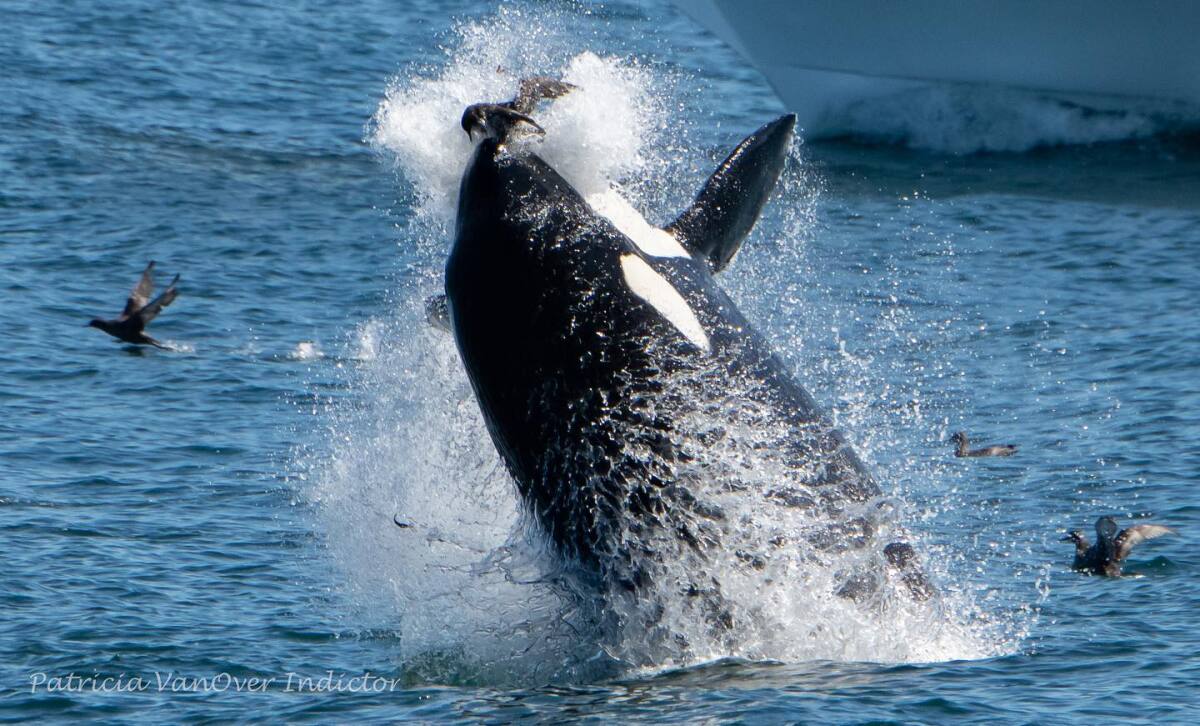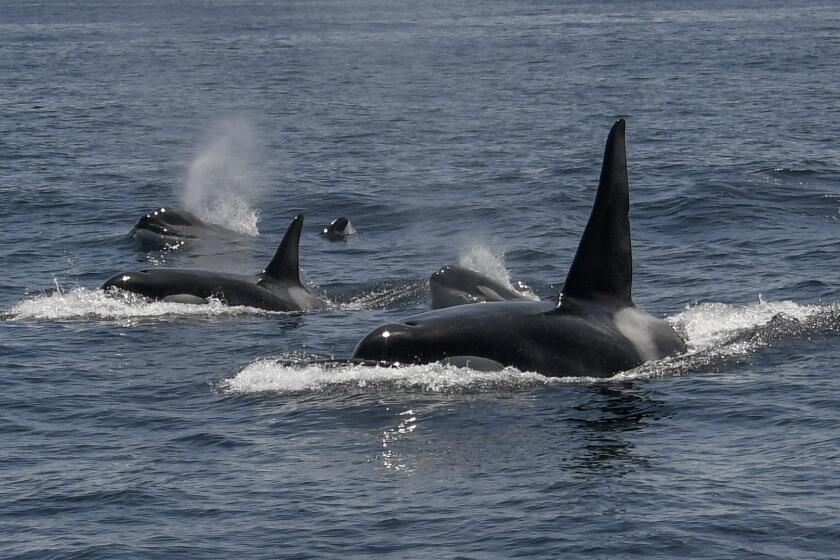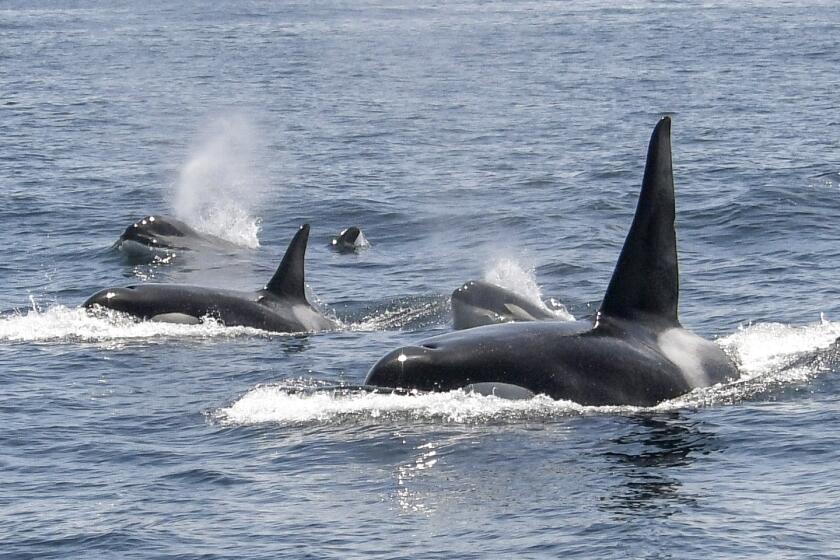‘Killer’ parties? Orcas making Central California coast their playground this summer

- Share via
Killer whales seem to be getting comfortable along California’s Central Coast this summer, with multiple sightings of pods playing and hunting near Monterey Bay.
It’s not uncommon to see killer whales along the California coast, but there have been more sightings this month than in a typical June, said Nancy Black, a marine biologist for Monterey Bay Whale Watch, a nature tour company.
A huge group of 30 orcas were spotted breaching off the coast for hours on June 11 — surfacing, slapping their tails and playing in the water.
Nine days later, another group of five orcas were seen hunting sea lions and toying with birds. On Wednesday, Black said yet another five-member group was spotted during a tour.
The unusually large group spotted near the Farallon Islands was possibly a meeting of six or seven families.
Some of the orcas from June 20 appeared to have been among the larger group from earlier in the month, Black said.
“We’ve been seeing killer whales more often than we usually do,” she said. “There’s not a good explanation for it. This is just part of their range — they roam up and down the coast. But they’ve been very social and very playful.”
Monterey Bay Whale Watch has captured video and pictures of the encounters.
Black, who is also director of the California Killer Whale Project, said there’s no fixed killer whale season. Orcas are known to travel between Southern California and Southeast Alaska.
However, they tend to appear regularly near Monterey Bay in April and May, when gray whales travel through the area with their recently born calves. The orcas tend to stay in the area hoping to catch some of the young calves.
This year, there seemed to be fewer sightings in April and May, but June has been unexpectedly eventful.
Evan Brodsky, a videographer with Monterey Bay Whale Watch who captured the June 11 encounter, said it was something he’d never seen before.
“I’ve been on a boat since I’ve been in diapers, and that was the best that I’ve seen in my life,” he said.
Black said at least 11 orca families seemed to have gotten together for their own ocean party — one that lasted more than eight hours.
“They made a big party and social event, where they were breaching and tail slapping,” she said.
On June 20, Black said the orcas seemed to be hunting seals in the area. Then, when they swam underneath a large group of shearwaters sitting on the water, they breached — tossing the birds into the air with the tips of their noses.
Killer whales have reportedly attacked more than 500 boats in European waters recently. Are they exacting revenge for humanity’s treatment of orcas?
Most recently, killer whales have drawn international attention for attacking yachts and fishing boats in Europe.
But in true California fashion, the Central Coast orcas seem more laid back. They have appeared to be in a jovial mood as they feed on migrating whales and sea lions in the area.
Although they travel up and down the coast from Southern California to Canada, the orcas seem to linger where their hunts may be more successful.
And if their bellies are full, Black said, they’ll stay in a playful mood.
More to Read
Sign up for Essential California
The most important California stories and recommendations in your inbox every morning.
You may occasionally receive promotional content from the Los Angeles Times.















